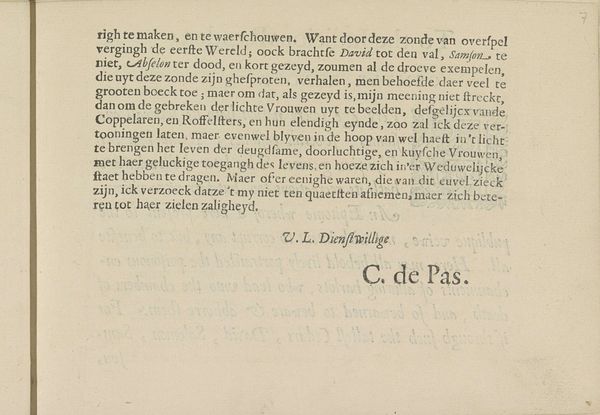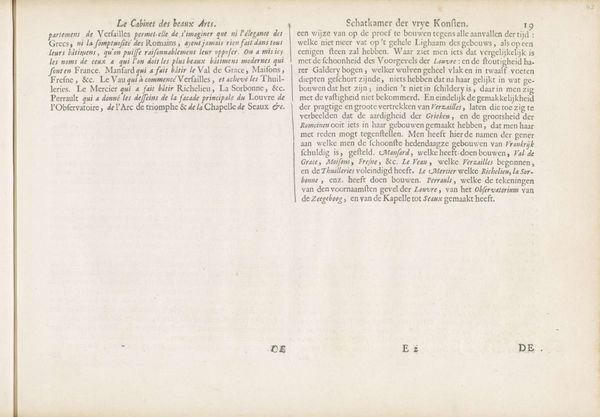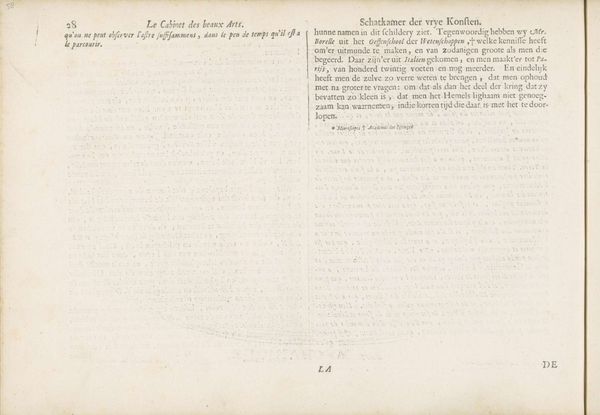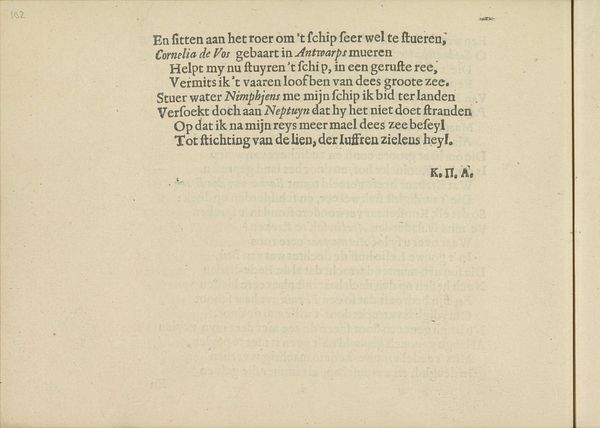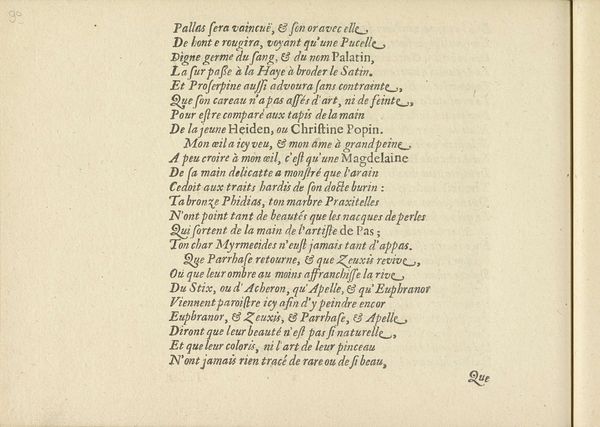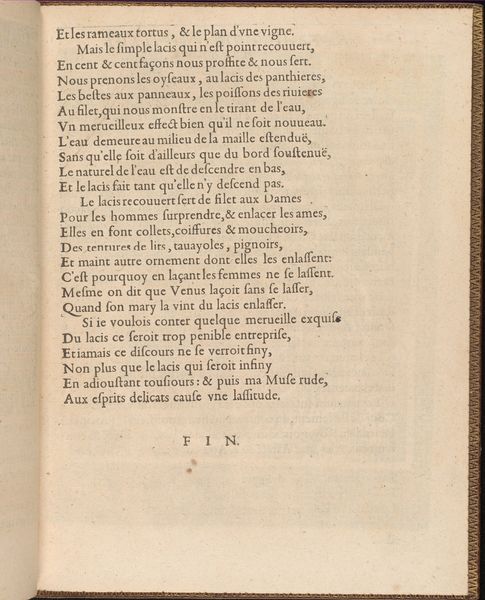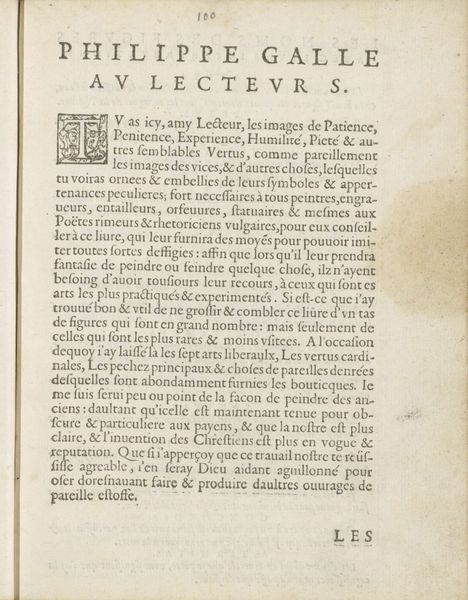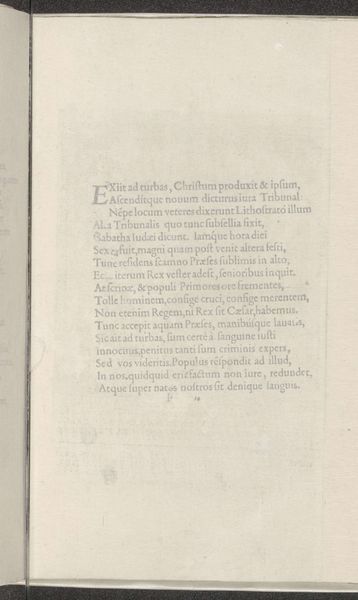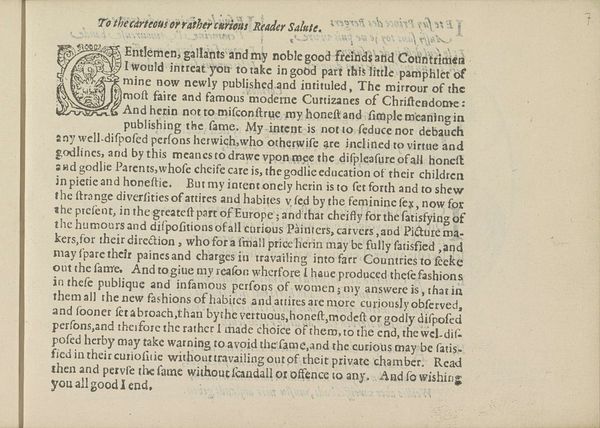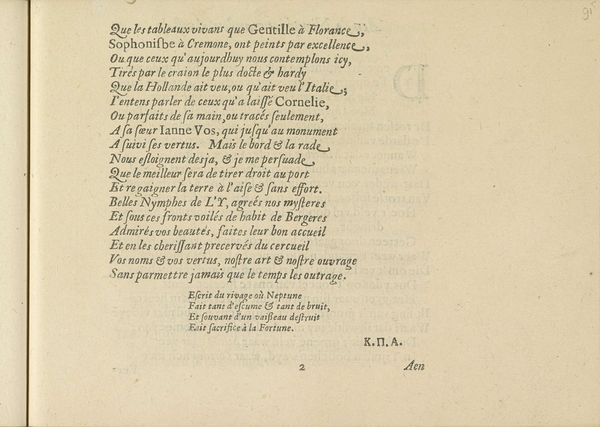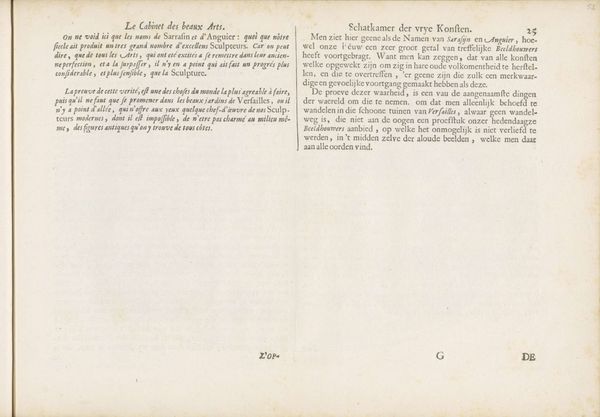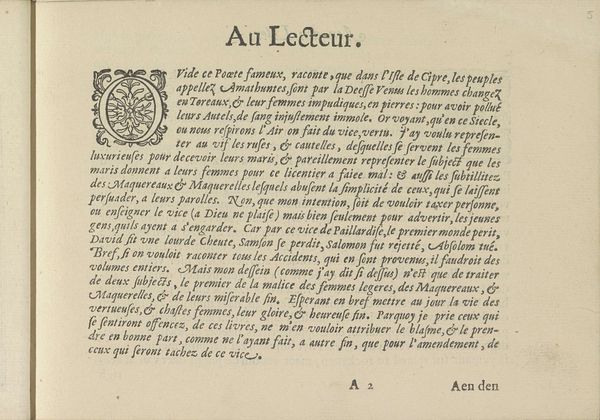
print, textile, engraving
# print
#
textile
#
history-painting
#
engraving
Dimensions: height 140 mm, width 190 mm
Copyright: Rijks Museum: Open Domain
Curator: Look at this fascinating engraving. It’s titled "Engelstalig voorwoord, pagina 2," dating back to 1641, and made by Crispijn van de Passe the Younger. It resides here at the Rijksmuseum. Editor: My immediate thought? Intimacy. The textures, the paper... it's such a personal moment frozen in time. I'm getting this overwhelming sense of care. Like a precious letter. Curator: Precisely. The page itself becomes this almost textile-like surface. You can see and almost feel the texture of the paper through the engraving, right? Think of the context, though—the mid-17th century, rife with political and religious upheaval. Who had access to writing materials? Who held the power to publish? The intimacy you perceive intersects with issues of literacy, privilege, and social status. Editor: I love how you pull that apart! Because I do see the seeds of protest—maybe subtle rebellion— embedded in the text. This fragment has English writing within a landscape dominated by other languages. Curator: Indeed. And Crispijn van de Passe II was from a family known for their engravings. They played a crucial role in disseminating knowledge and ideas. It's amazing that, even within this seemingly straightforward piece of text, they left us little gifts for us to find! Editor: Speaking of finding, the 'C. de Pas.' signature. It is not only confirmation, but also another little gesture toward his labor, his authorship, his identity within a system that often tried to suppress individual voices, especially the voices of women and those who existed beyond the rigid structures of power! Curator: I wonder, too, about the choice of language and the implied audience. An English foreword, promising good intentions? Editor: Maybe we should approach it as both political, a historical artifact of conflict and resilience, and philosophical with how the work addresses social inequities and issues that people continue to face to this day! I think there’s space for all of that! Curator: That's what's so compelling; it's almost contradictory but speaks to a more complete historical experience! I suppose that's why we are drawn to history isn’t it? Thank you, Crispijn van de Passe.
Comments
No comments
Be the first to comment and join the conversation on the ultimate creative platform.
